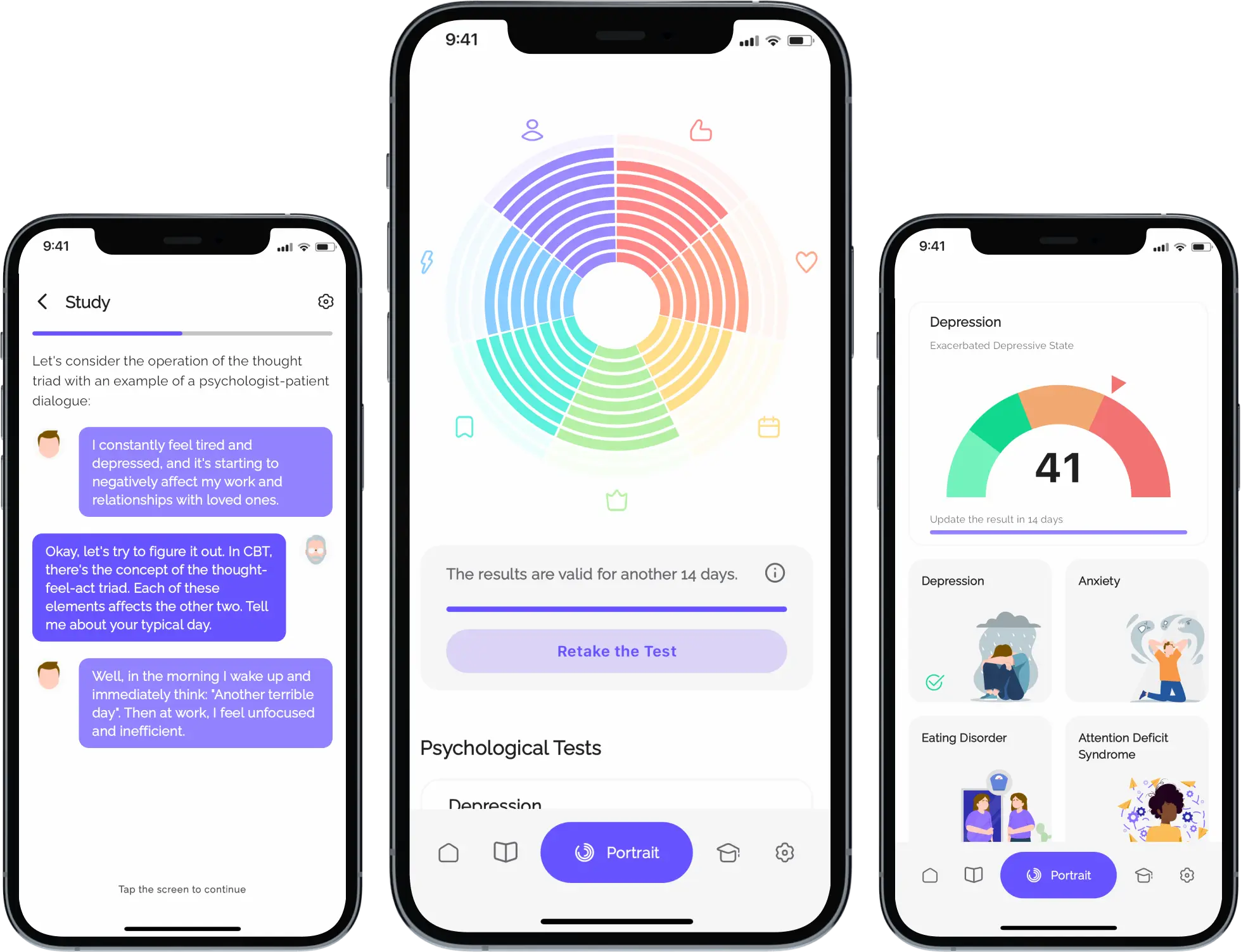
From the previous chapter, we've learned that our thoughts can influence our emotions and physical reactions.
Now, building on these basic concepts, we'll move on to the elements we'll be working with directly.
We spent quite some time thinking about how best to visualize the hierarchy of human beliefs in CBT. Ultimately, we decided that a tree serves as the perfect illustration.
Picture an apple tree in front of you—this represents your mind. At the top, you see fruits: some are ripe and plump, while others are rotten or worm-eaten.
In this analogy, the fruits represent our thoughts.
In CBT, these are called “automatic” thoughts because they arise in our minds quickly and without conscious effort.
They appear in such great numbers and so fleetingly that we often don't even realize they're there.
It's not events themselves, but our interpretations of them, that make us happy or unhappy.
Epictetus
More content in our app
You're only seeing a portion of the content. In the app, you'll find numerous interactive articles. Additionally, there are psychological tests to track your mood dynamics, a daily planner, an automatic thought journal, and much more!

Let's do a quick thought experiment.
Imagine you're in a movie theater, waiting for the film to begin.
Suddenly, a woman in the row ahead of you jumps up and slaps the person next to her.
This is both startling and stressful. Try to imagine what thoughts might spring to your mind and what emotions might follow.
We don’t know your personal history, so we can’t say for certain what you would think.
However, to illustrate our point, let's introduce two other characters—your neighbors.
On your left is a woman in her forties who has experienced domestic violence multiple times in the past. Here’s how she might react:
Poor thing… She might pay for this later when she gets home.
Sadness, fear, despair.
Barely holding back tears.
On your right is a young man who’s recently been through a long, difficult divorce.
What a witch! Couldn’t she wait until they got home instead of making a scene here?
Anger.
Fists clenched, blood pressure rising.
As you can see, the same event can spark entirely different reactions in different people, largely shaped by their life experiences.
Those initial, uncontrolled thoughts are what we call automatic.
Why, then, do different people have such different thoughts?
Does this mean that any negative situation inevitably leads us into a depressive cycle of thoughts and emotions?
No!
While everyone experiences automatic thoughts, they don’t necessarily lead to psychological problems for everyone.
Which thoughts arise depends on deeper factors.
Just as fruit on a tree doesn’t float in midair but grows from branches and roots, automatic thoughts stem from our intermediate and core beliefs.








